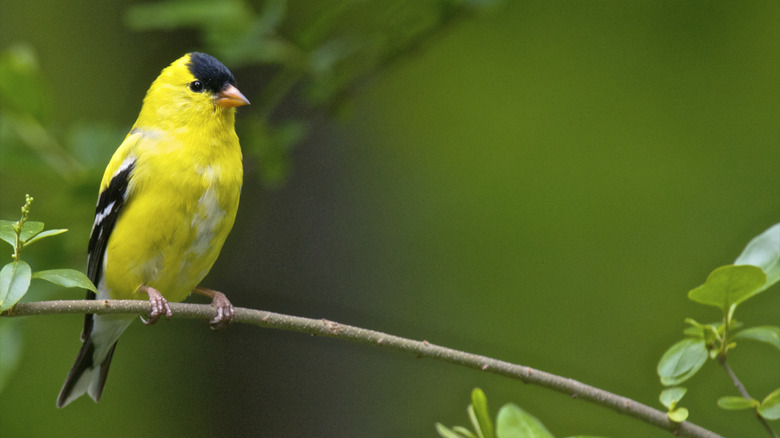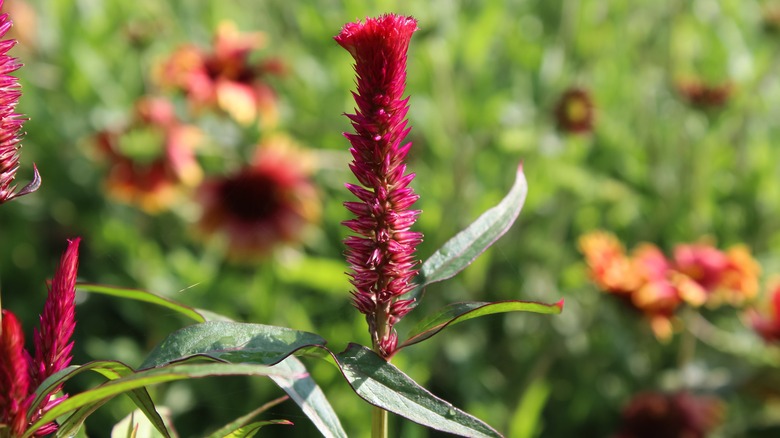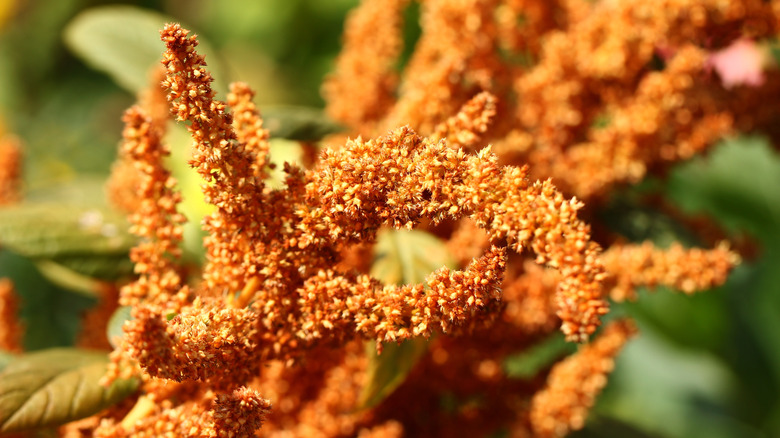Attract Goldfinches With A Garden Shrub Full Of Scrumptious Seeds
What better way is there to attract goldfinches to your yard than with plants that provide both bird food and visual interest? Fortunately, there are plenty of appealing flowers, shrubs, and trees that serve as a buffet for these visiting birds. Of these, amaranth (Amaranthus sp.) stands out with its immense wealth of delicious seeds that goldfinches love. It also has velvety inflorescence and vibrantly colored leaves you can admire throughout the growing season. The leaves and seeds are edible, too, so you can find ways to incorporate this plant into your menu.
Amaranth comes in many different varieties, most of which grow as annuals throughout North America. Some amaranth varieties are invasive. One example is Amaranthus retroflexus (also known as "redwood pigweed"), so you may want to tackle this invasive species on your property. Amaranth species are warm-season plants, and tend to bloom from the middle of summer until the weather turns cold in the fall. The seeds mature toward the end of summer, at which point you can expect to see birds flocking to your property. Below, we'll share a few handy tips for growing and planting these colorful flowers to attract more American goldfinches to your yard.
How to plant and grow amaranth in your home garden
You can sow amaranth directly in the garden, or start it at home in containers and transplant it outdoors later. If starting indoors, you should plant the seeds about a month and a half before the last frost date. The potting mix should include 40% compost, 30% soil, and 30% coco peat. To plant, pick up several seeds with a moistened toothpick, then deposit them into the growing medium to the depth of about ¼ inch. Keep the soil temperature between 60 and 90 degrees Fahrenheit for germination, and the seedlings should emerge in four to 10 days. You can transplant the seedlings outdoors once frosts no longer pose a hazard.
If sowing directly, you'll need to wait a bit longer. Amaranth does not do well in a cold environment, so wait until after the last frosts when the nighttime air temperatures stay above 50 degrees Fahrenheit. Start by finding a suitable location for your amaranth. The plants will enjoy a spot with plenty of full sun. Also measure the pH of your soil — amaranths prefer pH levels of 6.0 to 7.5, and a substrate that drains well. Sprinkle the seeds into the growing medium with a spacing of roughly 7 to 10 inches in rows 20 inches apart, at a depth of ¼ inch. After planting the seeds, keep the soil consistently moist until germination. Mature amaranths are massive, so you'll want to thin the seedlings to roughly a foot apart.
Ongoing care for amaranth plants
Amaranths can withstand drought conditions well, and you should take care not to overwater these plants. Excessive irrigation can cause root rot and various fungal diseases. To avoid these scenarios, water them only during extended dry periods. Even then, don't irrigate more than twice per week, and only if the soil feels dry.
Since amaranth grows quite tall, you may need to prop up their stalks with supports to prevent them from falling over. If you have some spare tomato cages kicking around, those should work for a few plants. Otherwise, consider installing netting or adequate metal supports in your amaranth patch. Even with the supports in place, it's beneficial to pinch the amaranths to contain their growth. If you don't, you'll end up with plants that are taller than you and are more difficult to manage. Pinching amaranths is relatively straightforward. Just wait for the young plants to grow a bit, then cut the central stem at a height of roughly 2 feet. After this procedure, the plant should start producing shorter, more numerous stems.
If you want the amaranth blooms to go to seed and start attracting goldfinches quickly, there's no need to deadhead the flowers. But to ensure a supply of seeds for the duration of the season, you can deadhead some of the plants in your patch and they will continue producing blooms. This way, your feathered guests will have more food to return to after the seeds from the original blooms are gone.


